Copa América 2024 kicks off on Friday, and sixteen teams will participate—ten from CONMEBOL and six from Concacaf. All 10 CONMEBOL national teams were eligible to enter. The six CONCACAF participants qualified through the 2023/24 CONCACAF Nations League. The teams will be the four League A quarter-final winners and two play-in round winners between the four losing quarter-finalists: Jamaica, Mexico, Panama, United States, Canada, and Costa Rica.
Mexico have qualified as the second in the CONCACAF Nations League after losing 0-2 against the United States. After that, they played three friendly games against Bolivia, Uruguay, and Brazil. They won 1-0 against Bolivia and lost against Uruguay and Brazil 0-4 and 2-3, respectively.
In the upcoming Copa América 2024, Mexico will be in Group B with Ecuador, Venezuela and Jamaica hoping to perform well to go forward in the tournament and we know that small details may have an immense impact in such big tournaments, one of these details is exploiting set-pieces.
In this tactical analysis, we will dissect Mexico’s tactics in attacking corners because we think that they are preparing for a good thing by using simple tricks that are diverse and very effective if they adjust some little things.
Blocks and screens
We will start with the most significant method they use to succeed in freeing the targeted area from zonal defenders or the marker of the targeted player, which is using blocks and screens. So, let’s explain the difference between blocks and screens first. A block asks an attacker to stand against a defender to prevent him from moving, like preventing the zonal defender from going to the targeted area for example. In contrast, a screen asks an attacker to block another attacker’s marker to free him, as we see in basketball. Let’s explain in detail.
In the first photo below, the defending team defends with a man-marking defending system using only two zonal defenders, a short-option defender, a player standing forward for counterattacks, a player standing on the age of the box and five man markers. To simplify the issue, they target the black area by the yellow player player, but there are two problems: the zonal defender and the man marker of this targeted player.
In the second photo, the blue attacker goes to the zonal defender to block him. At the same time, the targeted player moves around his orange mate, using him to do a screen for his marker, which is already done in the third photo in which an attacker moves to the far post to frame the goal. In contrast, his marker turns around to track him losing communication with the ball. In the fourth photo, the plan is done, with the block and the screen in blue and orange, respectively.

The ball is overcrossed, so it passes the targeted player, but we want to highlight that the man marker of the green attacker wants to look at the ball position. At this moment, he loses communication with his attacker, who can easily get the flicked ball or the rebound from the goalkeeper, as shown below.
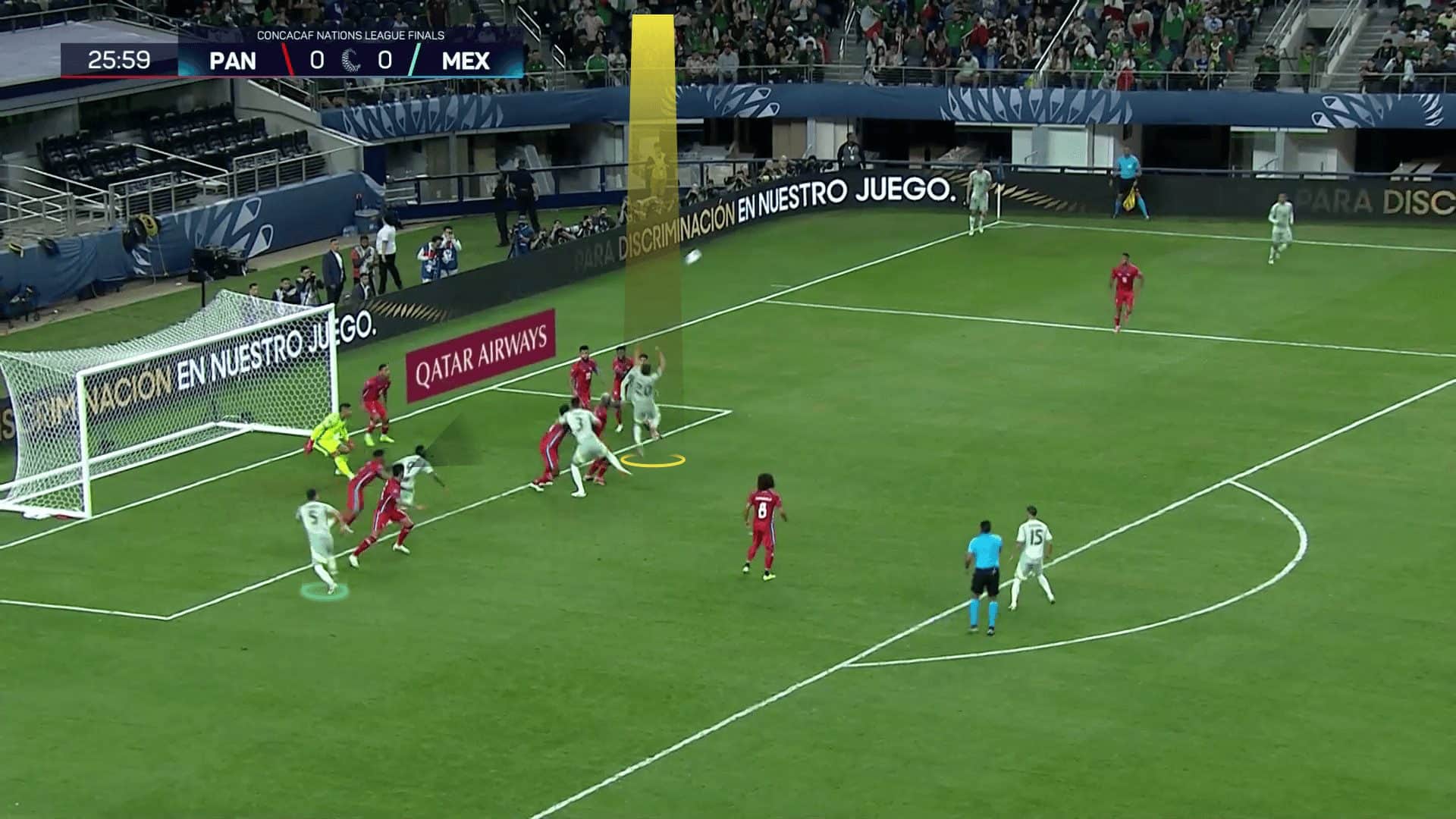
They usually use this strategy in their different routines, and you can find that in the case below. So, let’s think together in the same sequence that the routine designer thinks. In the first photo, we want to target the yellow player in the area behind the zonal defenders as the arrow points, so we have two problems: the zonal defender and the man marker.
In the second photo, two players move in front of the outer zonal defender to take his attention and ensure that he won’t step back to the targeted zone. The pink attacker tries to block the targeted player’s marker. The targeted player starts at the far post and moves around him, as in the third photo, but he starts at a far distance from him, so he can’t block him rightly, and he passes him, as in the fourth photo.

After that, he thinks of catching him from the back, but he is afraid of a penalty, so he lets him go and clears the ball, as shown in the two photos below.
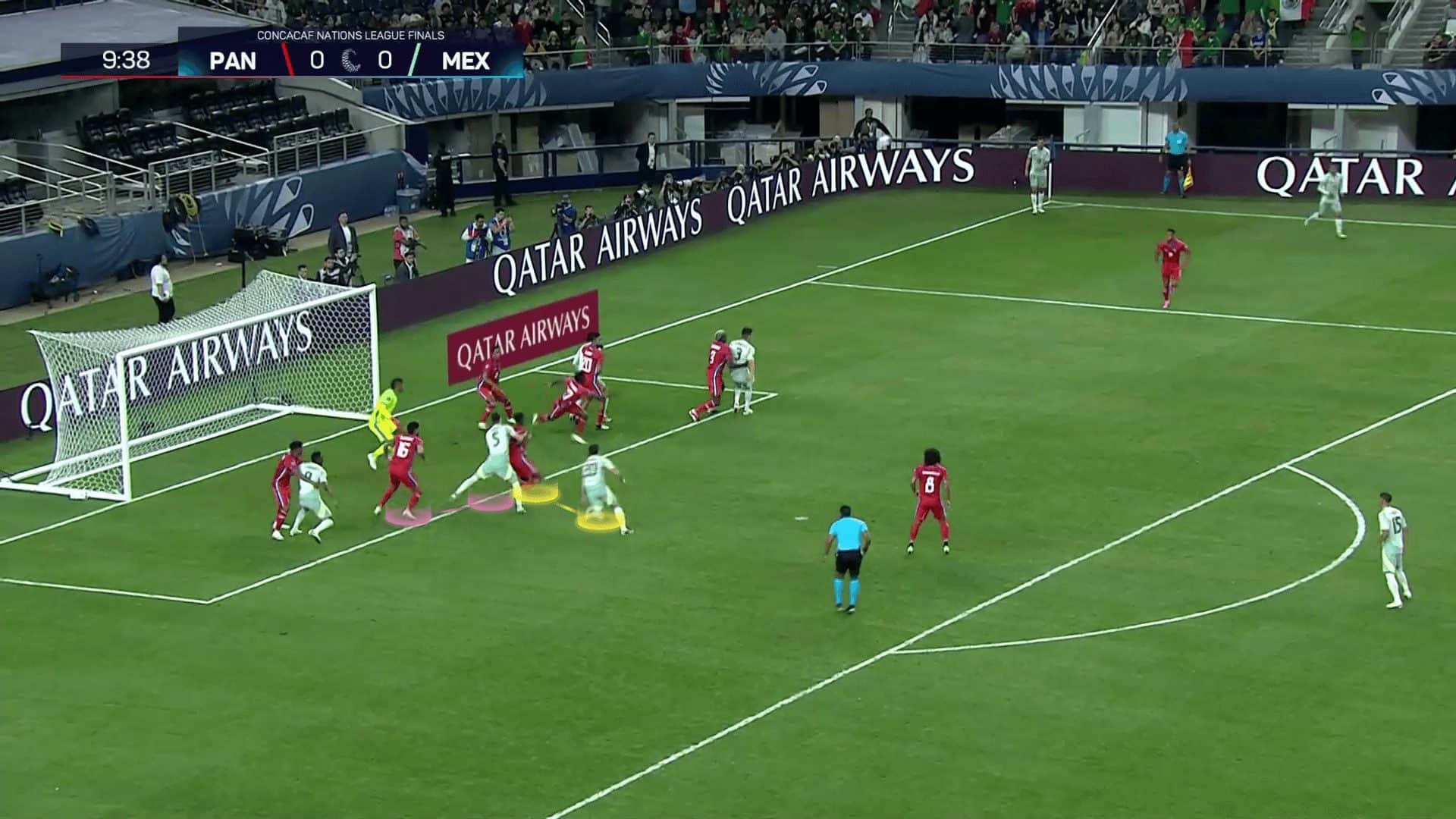
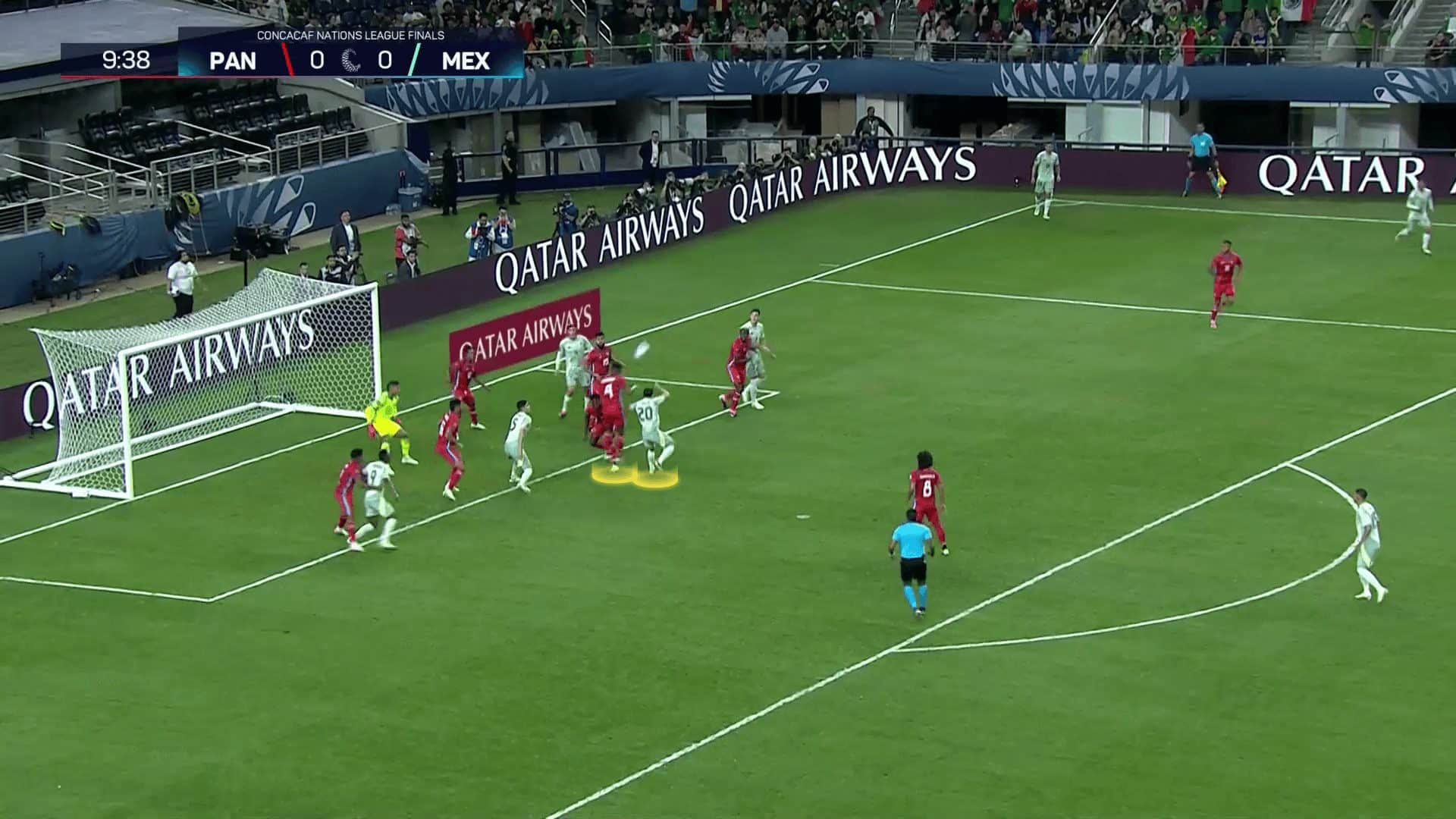
Packs and stacks
They have many ideas for assistance to help them succeed in blocks and screens, and we will discuss how they use packs and stacks in blocking screens or having seconds earlier than the marker. Starting with packs, a pack is a group of players standing very close to each other, as in the first photo below, but what is the purpose of that?
They want the targeted player, in yellow, to move toward the near post while his pink friend exploits his close position to only bend his back to do a screen for him, as in the second and third photos. In the fourth photo, the marker can escape from the screen to track the attacker again, but the attacker has already won some seconds to reach the targeted area first, but the cross isn’t accurate anyway. However, we want to highlight for the second time that they need to work more on the screens to do it in the right and easy body shape to achieve more success in the future.

In the case below, they implement the same strategy, but the man marker tries to avoid tracking him in the same path to avoid the predicted screen from one of his mates, so he decides to take the other path; in the second photo, but it makes him take longer time to face him, so the targeted player gets the ball first while there are two players framing the goal, but it hits the zonal defender, as shown in the fourth photo.

When using stacks, a stack is two players or more standing behind each other, sticking to each other so as not to leave any space between them. This means the marker can’t penetrate the space between them having full control of his marker, so the marker is forced to wait until the attacker starts to take a specific direction, and then he tracks him, as in the first two photos.
This separation allows the targeted player to have a moment before his marker, avoiding the physical touch, so he reaches the targeted area first, as in the third and fourth photos. Three players are framing the goal, and the fourth is going to the far post using a fake movement to the near post. Then, a curved run to the far post causes the same orientation problem, making the defender fail to track the ball and the attacker at the same time.

The ball reaches this attacker, and he shoots it, but it hits a defender in a dangerous chance, as shown in the photo below.
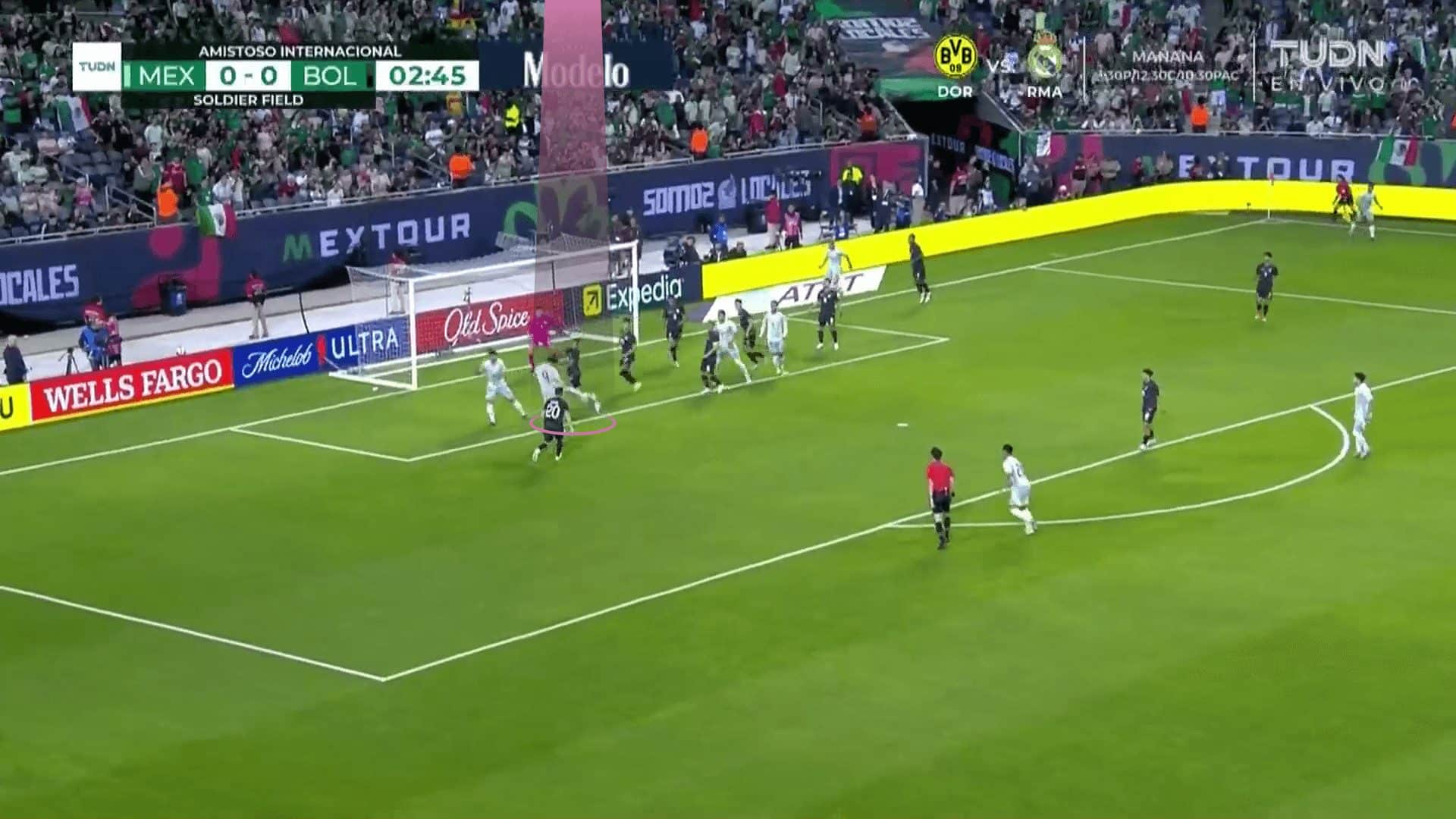
Numerical superiority against man markers
As we have mentioned, they have diverse ideas. We will discuss another idea that they use against hybrid systems, zonal defenders, and some man markers in front of them. That was clear against Brazil, but let’s know how Brazil defends during corners first.
In the photo below, Brazil clearly defends with a hybrid system using six zonal defenders, two man markers, a blue short-option defender, and an orange player on the edge of the box for the rebound. When the opponent has no short-option attackers, the short-option defender stands for the rebound while the orange one goes inside the box to help as a man marker.
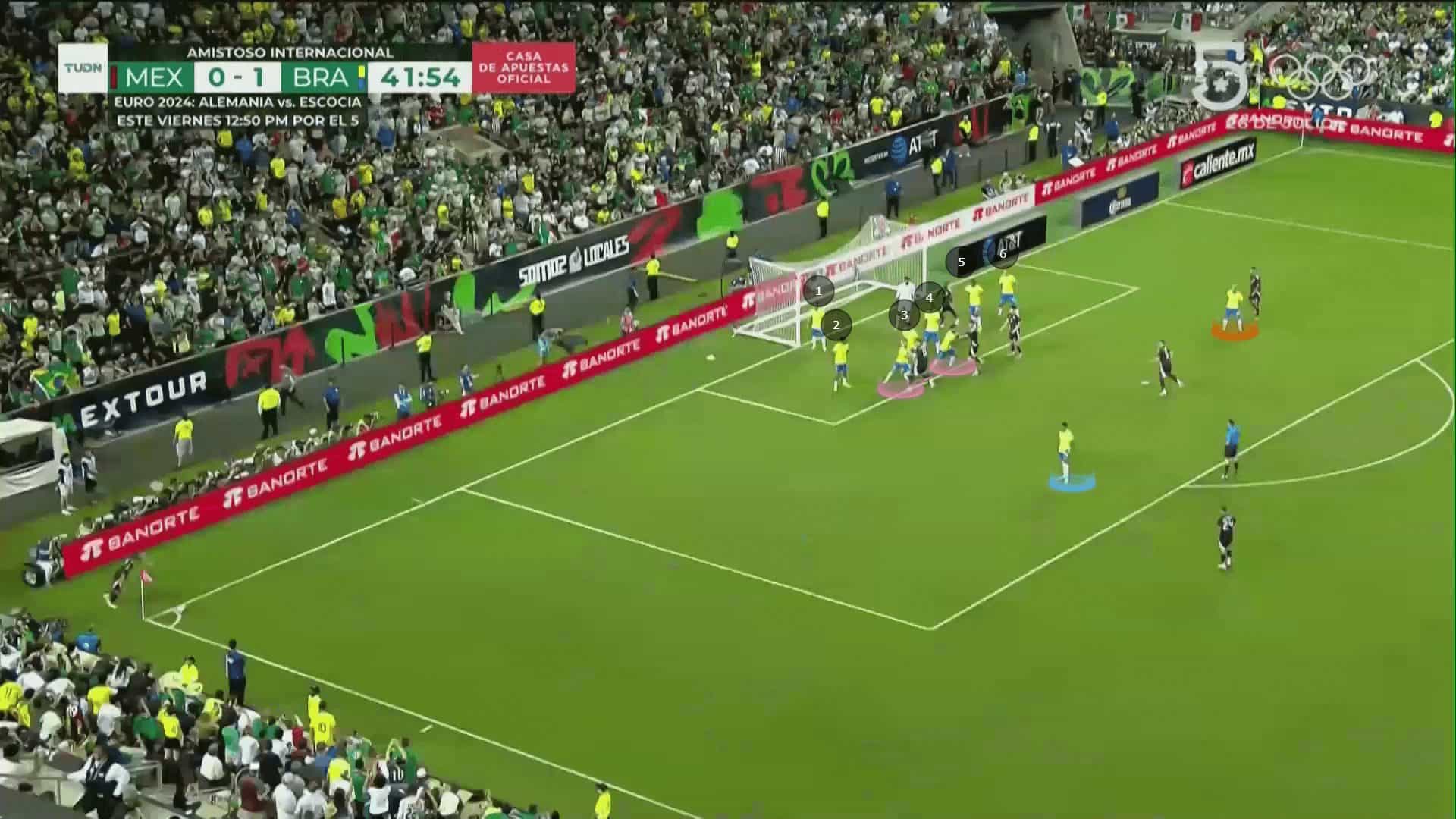
So Mexico uses a short option attacker in the first photo below to ensure that there are only two man markers against their attackers. They target a free one, in yellow. Thus, the first part of the plan is already done by using numerical superiority against man markers, but let’s go to the second photo to learn the second part, which is making sure that a zonal defender won’t occupy the targeted zone.
The first pink attacker goes to the near post, between the first two zonal defenders, to prevent the green zonal defender from chasing the targeted yellow attacker, while two white-arrowed players go to stand in front of two zonal defenders to take their attention and frame the goal after that, so the targeted zone is ready, as in the third and fourth photos.

In the photo below, the goalkeeper saves the ball brilliantly. At the same time, the same principle of framing the goal is used to be ready in case the goalkeeper punches the ball wrongly or in case the targeted player can’t control the ball well, so he flicks the ball instead of shooting it.
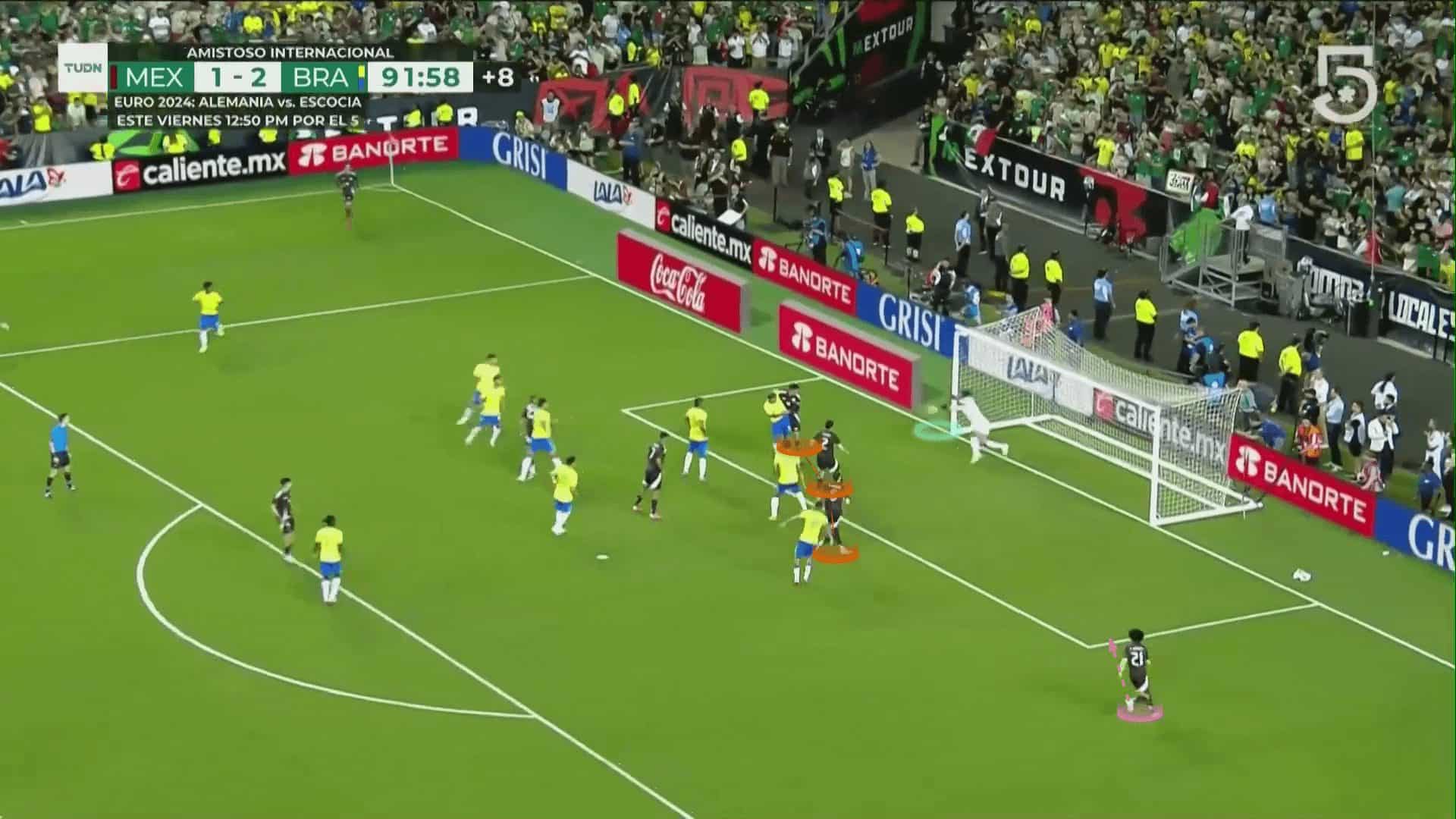
Conclusion
In this analysis, we have explained how Mexico can be effective in set-pieces during the tournament by using many tricks, and they can be more effective with only some adjustments.
In this set-piece analysis, we have shown that Mexico uses blocks and screens excellently, along with many other assistant ideas, like packs and stacks. We have also shown how they are diverse and can use different ideas against hybrid systems, like overloading against man markers.

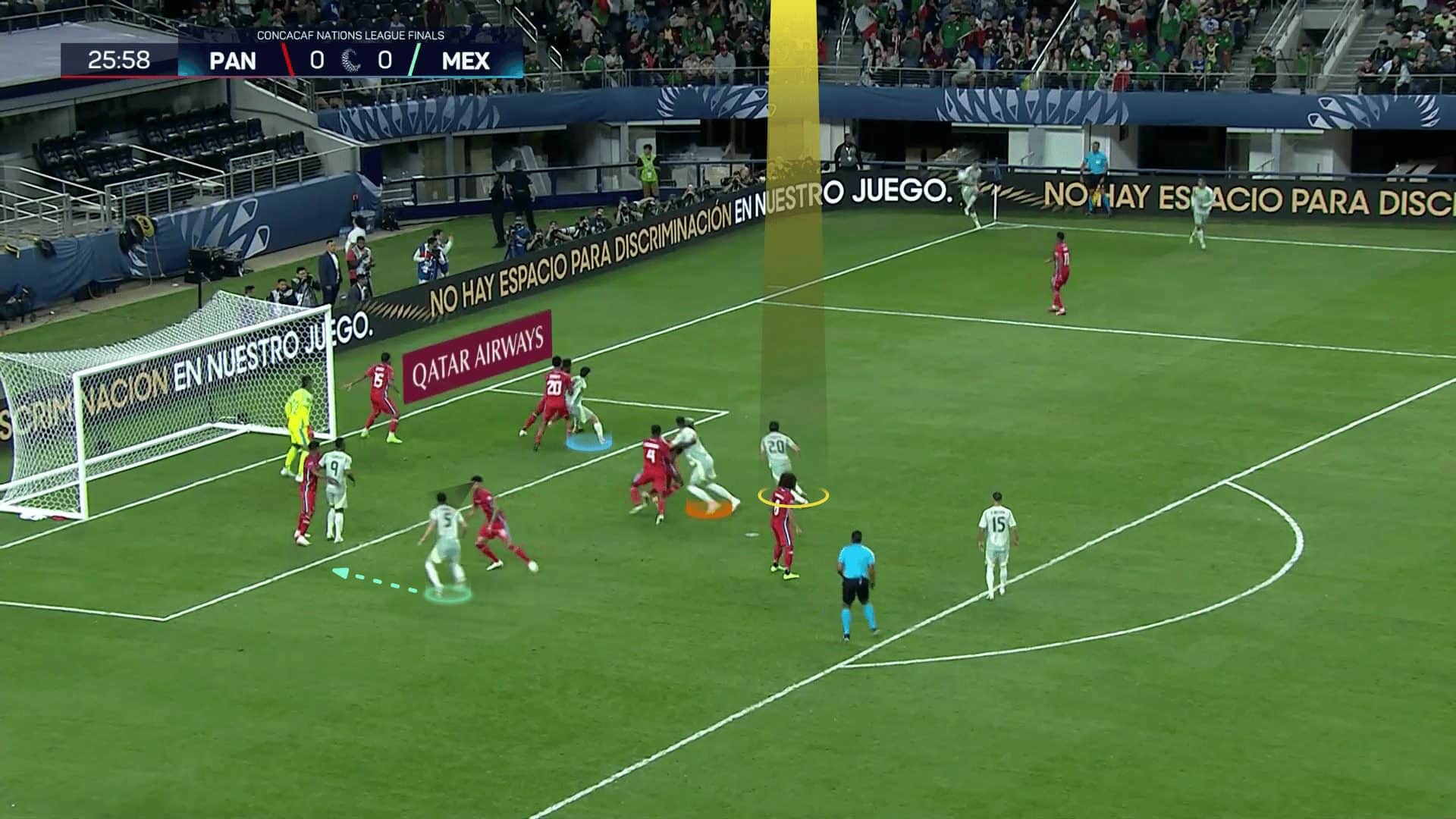




Comments